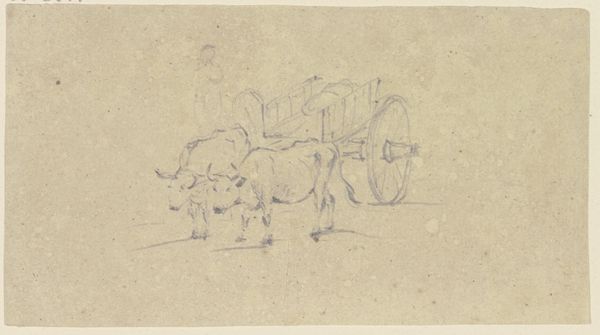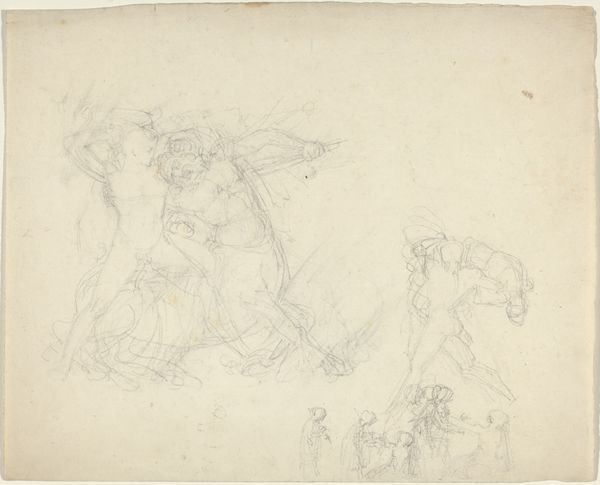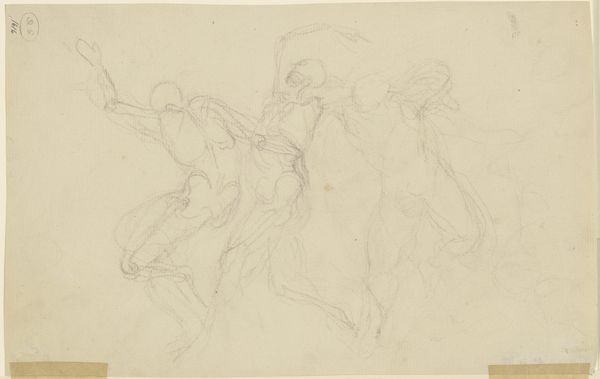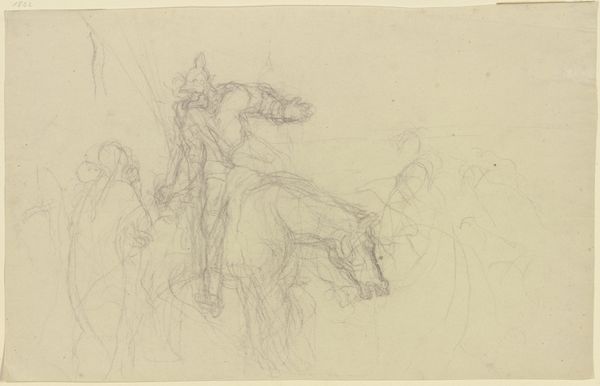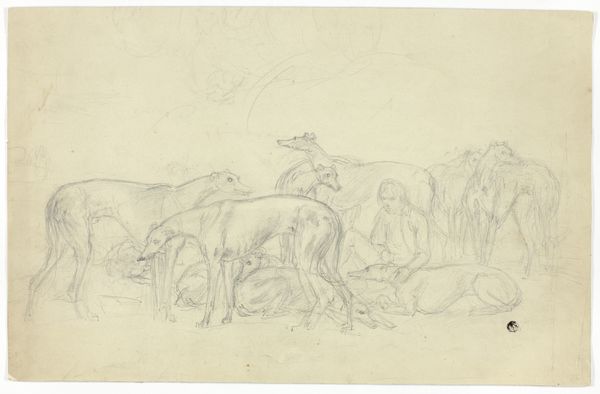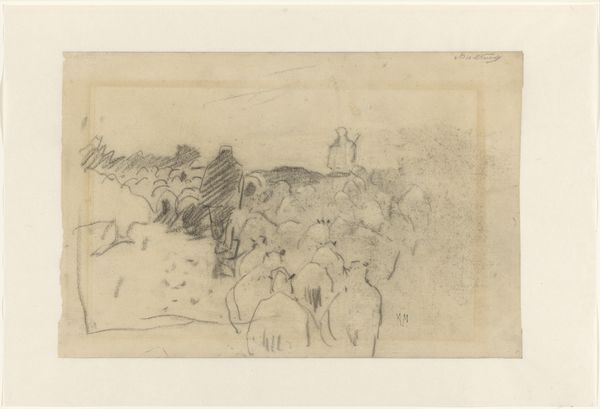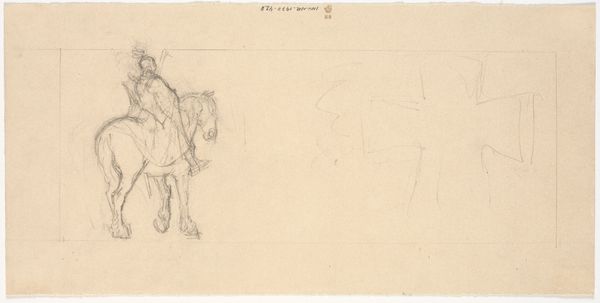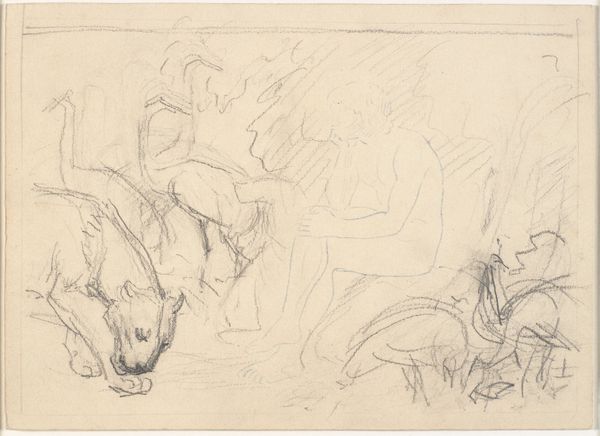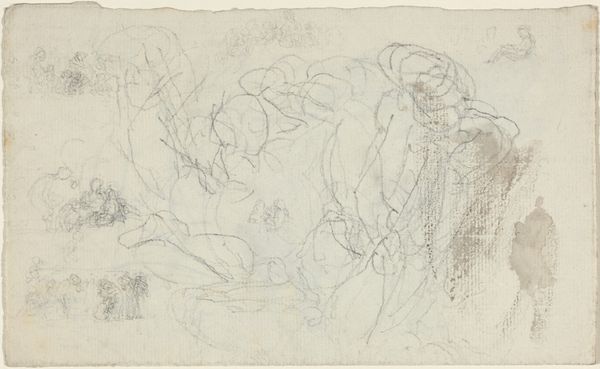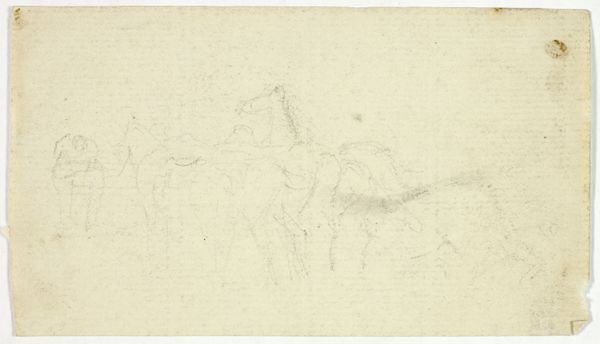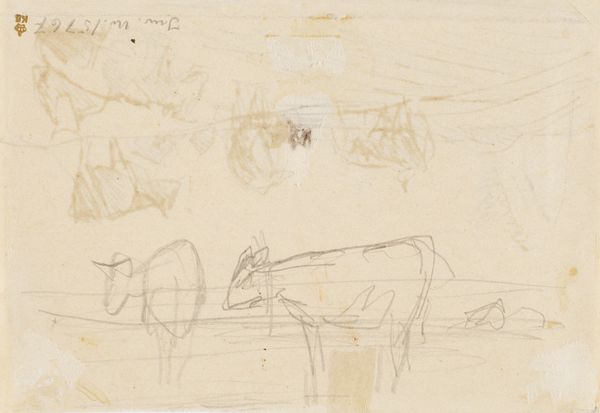
Dimensions: height 420 mm, width 344 mm
Copyright: Rijks Museum: Open Domain
Curator: Here we have a work titled "Schets met meerdere figuren," or "Sketch with Multiple Figures" by Johannes Hendricus Jurres, created sometime between 1885 and 1922 using pencil on paper. Editor: My initial impression is one of frantic energy. There's a swirling sense of movement, forms only half-realized... almost a chaotic yet intriguing dynamism. Curator: Indeed. Jurres, active in a period marked by shifts in artistic expression, engaged with Impressionistic tendencies, evidenced here by the suggestive lines and forms rather than a fully rendered scene. He’s playing with the public's understanding of how much detail is required to successfully carry the story. Editor: For me, this rawness is exactly what captivates. You see the artist’s hand at work. It feels less like a finished object for consumption and more like a tangible record of Jurres thinking, trying, the physical labor visible. The price and perceived value become murkier as a result, doesn't it? Curator: That tension between sketch and finished piece, between process and product, was certainly something artists grappled with at this time. This work, as a drawing, provides intimate insight into the academic practices that circulated through European academies. Editor: So it's interesting how the means of its production are visible—we see not a grand pronouncement from the artist but, instead, evidence of the artist's mark, the grain of the paper. Do you believe the institutions exhibiting these works alter their impact on viewers? Curator: Absolutely. Displaying such a preliminary work elevates the status of the artistic process itself. Museums historically focused on finished masterpieces; including sketches invites the public to participate in the artist’s world and consider the steps taken toward those "masterpieces." Editor: It is like we get to peek behind the curtain of this world, yes. It's a welcome challenge to notions of the artist as solitary genius, removed from practical considerations like the cost of materials. It shows how work always exists as part of a continuous laboring process. Curator: Agreed. By showing this, hopefully audiences feel welcome to question some of art history’s grander narratives, and, potentially, feel emboldened to express their own artistry, as well. Editor: I find myself dwelling on how the simple act of mark-making embodies so many complex socio-economic forces. Thanks to Jurres, our sketch really provides a space for pondering artistic means.
Comments
No comments
Be the first to comment and join the conversation on the ultimate creative platform.
